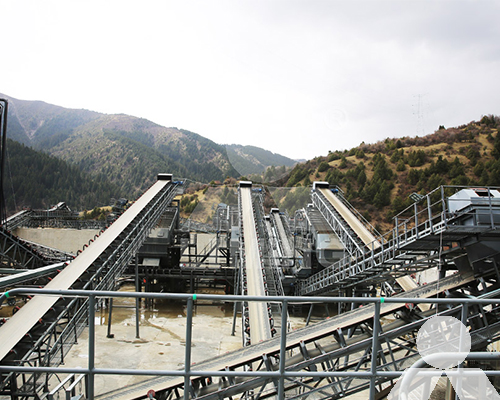Silica sand maker machine in cement plant
Silica sand is a key component in the production of cement. It provides the necessary silicon dioxide (SiO2) that helps to bind the other ingredients in cement together and create a strong, durable material.
Silica sand maker machine is a piece of equipment that is used to crush and grind silica sand into the fine powder that is needed for cement production. The machine typically consists of a series of rotating hammers or impellers that break down the sand particles until they are the desired size.

There are many different types of silica sand maker machines available on the market, each with its own advantages and disadvantages. Some of the most common types include:
- Jaw crusher: These machines use two opposing jaws to crush the sand particles. They are relatively inexpensive and easy to operate, but they can produce a lot of dust.
- Impact crusher: These machines use high-speed impellers to break down the sand particles. They are more expensive than jaw crusher, but they produce less dust and can generate finer sand particles.
- Cone crusher: These machines use a cone-shaped chamber to crush the sand particles. They are the most expensive type of silica sand maker machine, but they produce the finest sand particles and are the most efficient.
The type of silica sand maker machine that is best for a particular cement plant will depend on a number of factors, including the size and type of sand deposit, the desired production capacity, and the budget.
The process of making silica sand in a cement plant
The process of making silica sand in a cement plant typically involves the following steps:
- Quarrying: The first step is to quarry the silica sand. This is done by blasting the sand out of the ground with explosives or using heavy machinery to excavate it.
- Crushing: The next step is to crush the silica sand into smaller pieces. This is done using a jaw crusher, impact crusher, or cone crusher.
- Grinding: The crushed silica sand is then ground into a fine powder. This is done using a ball mill or a roller mill.
- Classification: The ground silica sand is then classified by size. This is done using a vibrating screen or a classifier.
- Storage: The classified silica sand is then stored in silos until it is needed for cement production.
The importance of silica sand in cement production
Silica sand is an important component in the production of cement. It provides the necessary silicon dioxide (SiO2) that helps to bind the other ingredients in cement together and create a strong, durable material.
Silica sand is also used in a variety of other applications, including:
- Glass production: Silica sand is the main ingredient in glass. It provides the necessary silicon dioxide (SiO2) that gives glass its strength and clarity.
- Foundry sand: Silica sand is used in foundries to create molds for metal castings. It provides the necessary heat resistance and durability to withstand the molten metal.
- Water filtration: Silica sand is used in water filtration systems to remove impurities from water. It provides the necessary surface area for the impurities to adhere to and be removed from the water.
The future of silica sand production
The demand for silica sand is expected to grow in the coming years. This is due to the increasing demand for cement and glass, as well as the growing use of silica sand in other applications.
The future of silica sand production is likely to be characterized by the following trends:
- Increased automation: The use of automation in silica sand production is expected to increase in the coming years. This will help to improve efficiency and reduce costs.
- Improved environmental sustainability: The environmental impact of silica sand production is a growing concern. The industry is likely to come under increasing pressure to reduce its environmental impact in the coming years.
- New applications: The development of new applications for silica sand is likely to drive growth in the industry in the coming years.
Overall, the outlook for the silica sand production industry is positive. The demand for silica sand is expected to grow in the coming years, and the industry is likely to be characterized by increased automation, improved environmental sustainability, and the development of new applications.









